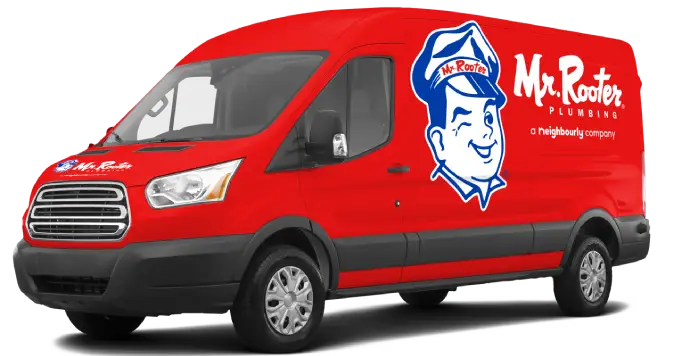While you may have wondered how your drain lines work or pondered how a water heater works, have you ever wondered, "How does a toilet work?" As one of the most used, universal, and important plumbing fixtures in your home, understanding the basics of what happens when you flush will not only make you almost as knowledgeable as our Edmonton plumbers but will also empower you to handle minor issues before they can escalate any further.
At Mr. Rooter Plumbing of Edmonton, we strive to ensure that each of the folks we work with is as informed as possible when it comes to their plumbing systems. While you may just think that a toilet is as basic as a flush valve, some water, and a seat, your loo plays a critical role in your home's plumbing network and functionality. Understanding its components and how they work together can help you maintain it better and avoid costly repairs in the long run. How does a toilet work? Edmonton homeowners will be well aware of how they work when the next flush comes around.
Get Familiar with the Parts of a Toilet
How does a toilet work? For one, it is composed of several parts that all work in tandem to achieve one goal: safely transporting waste away from your property. The toilet is connected to your home's water supply and either a sewer or septic system. When you flush the toilet, gravity and engineering take over, allowing the water and waste to disappear magically. Except, it's not magic—it's largely due to the following parts. There are two sections of parts: the toilet tank parts and the toilet bowl parts. The toilet tank parts include:
- Toilet tank: The tank stores the water used for flushing.
- Flush handle (or lever): When lifted (or pressed), the flushing mechanism activates the flushing process by pulling on a chain.
- Flush rod and flapper lift chain: The flush rod and lift chain connect the handle to the flapper inside the tank.
- Flapper valve: The flapper valve seals the drain hole at the bottom of the tank. As it lifts, it releases water during a flush.
- Fill valve: The fill valve controls the amount of water entering the tank.
- Overflow tube: This part prevents water overflow by directing excess water to the toilet bowl.
- Float: This part regulates the water level inside the tank.
And the toilet bowl parts include the:
- Toilet bowl: As you can imagine, the toilet bowl is designed to hold water and waste. It includes the trapway and an S-shaped channel that directs the waste to your sewer system.
- Rim: The rim is the upper edge of the bowl, and it has holes that allow water to flow in and rinse out the bowl during a flush.
- Toilet lid and seat: Responsible for both comfort and hygiene.
- Toilet gasket and wax ring: These components are essential for sealing the connection between the tank and the bowl. They also create a seal between the base of the toilet and the floor, preventing leaks.
- Toilet flange: The flange mounts the toilet to the floor and connects the fixture to your drain pipe.
How Your Toilet Actually Works
So, when you press the flush handle, how does a toilet work? A toilet functions with the help of gravity and siphoning, which safely removes waste. Let's dive in:
1. Flushing Action
Once you've put your newspaper down, you hit the toilet handle. When the handle is activated, it lifts a rubber flapper valve inside the toilet tank through a lever and chain mechanism. The flapper opens the large hole at the bottom of your tank, allowing water to rush quickly and rapidly away from the tank and into the toilet bowl through the rim and siphon jets.
2. Removal of Waste
The water fills the toilet bowl, forcing the waste down and into the S-shaped trapway. As the water level rises in the trapway, the siphoning effect occurs, pulling waste and water from the bowl. Finally, the waste is pushed into your sewer system.
3. Flushing Ends
When most of the water has drained, air fills the siphon tube. The air breaks the siphoning cycle, stopping the flow of water. Do you know the sound that gurgles after you use the toilet? That's typically the signal that the flush cycle is complete.
4. Refilling The Bowl
To prevent leaks, the toilet flapper must close the seal to the tank's water. Many of our toilet repairs involve the flapper malfunctioning or becoming worn over time. It's also a reason for hiring a professional plumber to assist with the new toilet installation process. Once the flapper closes to seal the tank, the fill valve opens to refill the tank. The fill valve also adds water to the tank, ensuring it reaches the appropriate level for flushing. If the water level is low, the toilet may not flush effectively, which can lead to issues such as clogs and overflow.
5. Water Levels
The water inside the bowl should always remain at a set level, which is maintained by the refill and trap system. Along with the P-trap, this also helps prevent sewer gases from entering your bathroom and ensures your toilet is ready for the next use.
What You Can Avoid by Knowing How Your Toilet Works
By now, you shouldn't be asking, "How does a toilet work?" Edmonton homeowners should be asking, “Now that I know how a toilet works, how can this benefit me and my plumbing system?” Well, like many things in life, the more you know about something, the fewer problems you will experience. By understanding how your toilet works, you will benefit from the following:
- Knowing how to troubleshoot issues like a running toilet or clogs.
- Preventative maintenance, like understanding how to recognize problems early on.
- By being able to handle simple repairs on your own, you can avoid having to call a plumber for small issues.
Mr. Rooter Plumbing of Edmonton — Your First Call for Any Issues You May Have with Your Porcelain Throne
At Mr. Rooter Plumbing of Edmonton, we're your first call for all your plumbing needs. From unclogging stubborn toilets to identifying the cause of a running toilet, our plumbers are able to help promptly when you need us most.
Contact us today to get started with one of our plumbing experts or to learn more about our services.

